Computex2018
Latest

Microsoft and friends need to explain why always-connected PCs make sense
It's been over a year since Microsoft, Qualcomm and Intel unveiled the Always Connected PC (ACPC) ecosystem at WinHEC 2016. At Computex 2017, we learned about Qualcomm's undertaking to power PCs with its mobile processors and Intel pledged to support eSIM in all its coming radios. The first wave of devices trickling out haven't gained much traction with the public, though. Despite some fairly obvious benefits, like a constant connection to gigabit LTE, long-lasting batteries and thin, fanless designs. Plus, Sprint is offering free data this year with each Snapdragon-powered device.
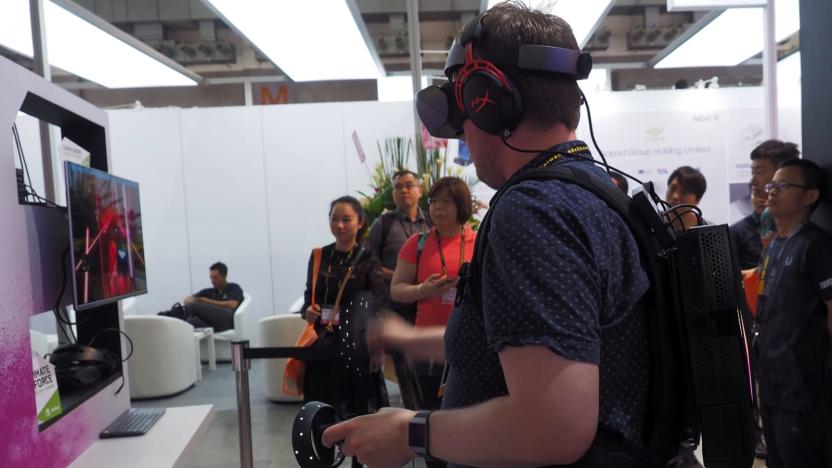
After Math: It's trade show season
Ah June, the January of summer. With Computex winding down and E3 getting started, the weeks are just going to be packed with new gadgets and forward-looking announcements. Oh yeah, Apple had a keynote this past week as well but since there weren't any hardware announcements, most folks just sorta tuned that one out. Numbers, because it's only 6 months until CES!
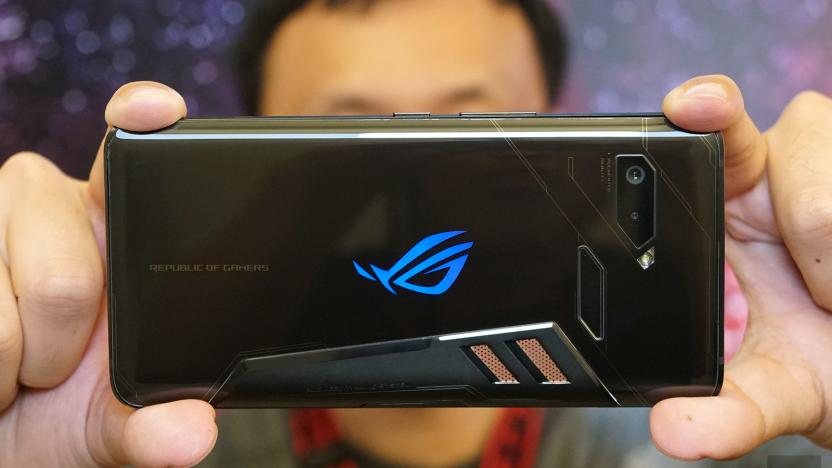
A brief (and depressing) history of gaming phones
ASUS' surprisingly ambitious ROG Phone is a clear sign the company has confidence in the gaming smartphone category. And it wasn't that long ago that the likes of Razer, Xiaomi and Nubia thought they saw an opportunity for a cash grab here. But as history has shown, gaming hardware is risky business, especially a segment this niche. Remember, not even Nokia at the height of its powers could crack the gaming phone equation with its legendary infamous N-Gage. While we wait for the ROG Phone to arrive later this year, let's take a stroll down memory lane and revisit some of its precursors.

PCs are actually exciting again
Last year's Computex showed us how the PC would evolve. This year, that evolution began to feel concrete. Hardware is getting better across the board, as you'd expect. But there's also a renewed focus on productivity -- doing work that can't be done on a phone or tablet -- as well as fixing common issues. Intel and AMD are racing to cram even more cores into their processors, appeasing the most power hungry users. And we even caught a glimpse at some intriguing concepts for future devices.

Here's everything you missed at Computex 2018
It's been a wild week at the world's largest PC show. From an extremely high-spec gaming phone to a touchscreen trackpad and a gorgeous dual-screen AI-powered laptop, ASUS pulled out all the stops to impress the world from its turf here in Taiwan. But ASUS wasn't alone in showing off some impressive new products at Computex 2018. Qualcomm unveiled the Snapdragon 850, its first built-for-Windows processor, while Intel and AMD launched chips with more cores and at higher clock speeds than before. Meanwhile, NVIDIA announced a new platform specifically for smarter robots and Microsoft introduced a new category of displays that are basically DIY Surface Hubs.
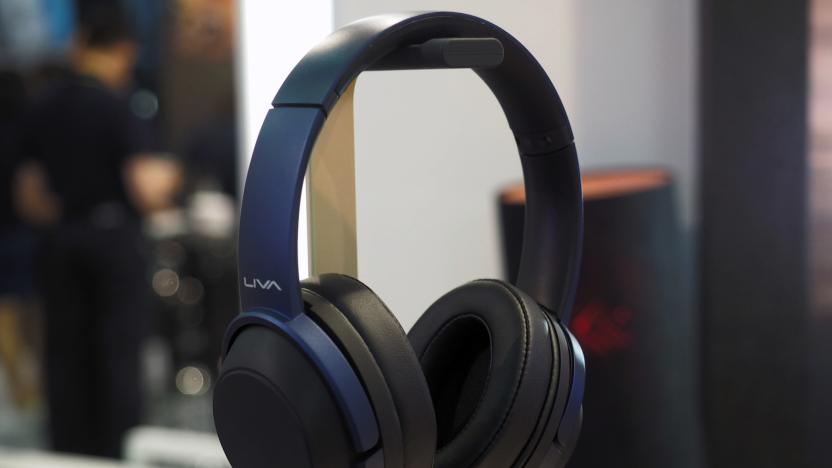
Liva headphones are a phone-free way to talk to Alexa
Earlier this year, Amazon introduced an "Alexa Mobile Accessory Kit" with the aim of bringing the company's personal voice assistant to wearables and headphones. This week at Computex 2018, I managed to get a closer look at a pair of headphones to make use of exactly that, but with a twist. In addition to Bluetooth, the Liva Aston Smart headphones actually has Wi-Fi built-in. So as long as you hook it up to your router (you'll need the app at least once for setup), you'll then be able to use it interact with Alexa, no Echo or phone required. The company claims it is the very first pair of WiFi headphones to have Alexa built in.
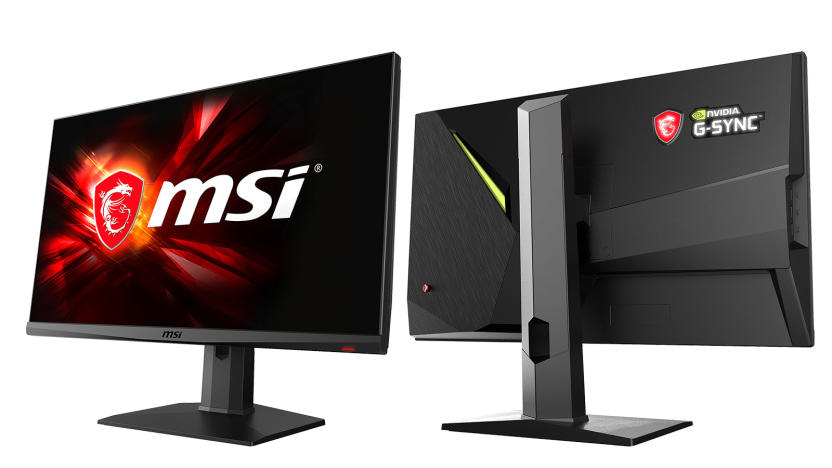
MSI’s 25-inch gaming display is absurdly fast
MSI has unveiled a 25-inch, 1080p NVIDIA G-Sync-compatible display with a scorching 240 Hz refresh rate and 0.5 millisecond response time. As you'd expect with those specs, the Oculux NXG251 (yes, that's the name) is aimed at eSports professionals and wannabes, so the $599 price tag reflects its high-end purpose. For that sum, however, gamers can expect a near-instant, lag-free response time and ghost-free images, even at 200 fps gaming speeds.

Spinning litter box automatically collects your kitty's poop
I love my cat. She's cute, cuddly and I think she's adorable when she's playing with string or chasing after a stuffed mouse. But the one thing about owning a cat that I'm definitely not a fan of is cleaning up her poop. It's stinky, it's messy and did I mention it's stinky? I've played around with the idea of getting an automated self-scooping litter box, but I may have come across something much more colorful -- and a tiny bit more terrifying -- here at Computex 2018. It's a cat-eared litter contraption that rotates and spins to collect your kitty's poop.

Intel wants to get you excited for PCs with 'Creator' machines
Stylish gaming rigs aren't hard to find today, but with its "Creator PC" initiative, Intel is aiming to inspire hardware makers to develop high-end computers that'll appeal to a wider audience. You can think of it like Intel's push for thin and light Ultrabooks years ago, though the company isn't planning to spend nearly as much marketing Creator PCs. It's more of a "build it and they will come" approach, with an emphasis on design and cutting edge hardware like Intel's Optane SSDs and Thunderbolt 3 connectivity.
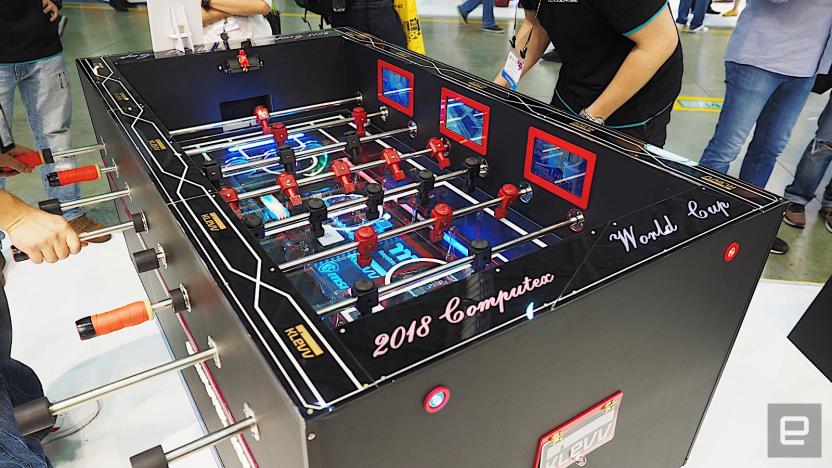
This PC case doubles as a foosball table
Computex is a wonderland of crazy PC mods, and this year is no different. We've seen cases that look like a miniature airplane, to one that resembles an old-fashioned record player. What is arguably the most insane of the lot, however, is this one made by Taiwan-based I.I.D Maker Studio. Yes, that's a massive PC, complete with MSI X299 Gaming M7 and MSI 2370 Gaming Plus motherboards, MSI Geforce GTX 1080 Ti Gaming X graphics cards, a Thermaltake watercooling rig, six small displays fitted along the inside walls, all housed inside a make-shift and completely functional foosball table. Because, you know, the World Cup is coming up. But also because it looks absolutely incredible. Have a closer look at this amazing tribute to computing, and football, in the gallery below. Click here to catch up on all the latest news from Computex 2018!
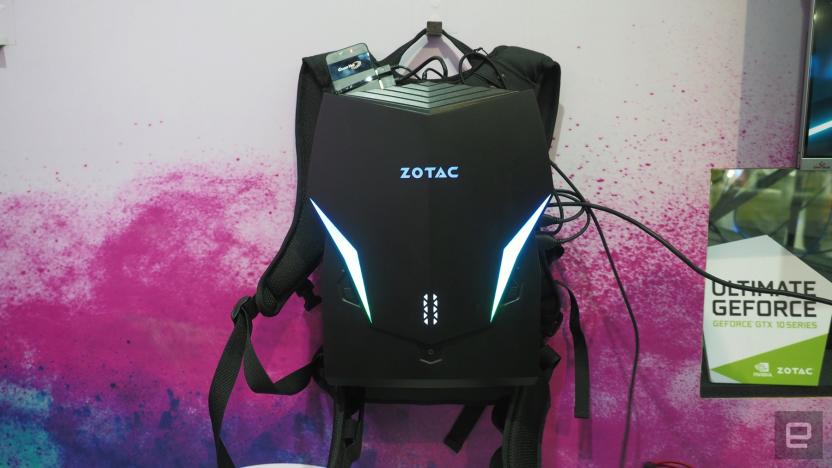
Zotac cut battery life to make its VR backpack smaller
PC virtual reality means that you are always tethered to a desktop, limiting your motion and how much you can suspend your disbelief. Companies like Zotac, HP and MSI thought the solution was to put the PC in a backpack, the only limit being the life of the batteries you could carry with you. But all three were heavy and clumsy, with an understandably short lifespan. Two of those issues Zotac is hoping to remedy with its VR GO 2.0, the third? Not so much.

I wish I could buy Intel's cute little E Ink dual-screen PC
Computex 2018 has been full of surprises. In addition to the usual array of processor news, updated laptops and fresh gaming hardware, we saw companies like ASUS and Lenovo show off intriguing dual-screen devices as well. Both those companies worked with Intel on their products -- Project Precog and the next-generation Yoga Book respectively, but the chip maker had its own concept to show off too. At its open house here in Taipei, Intel shared demos of a 7.9-inch dual-screen PC codenamed Tiger Rapids, and I'm having trouble hiding my enthusiasm.
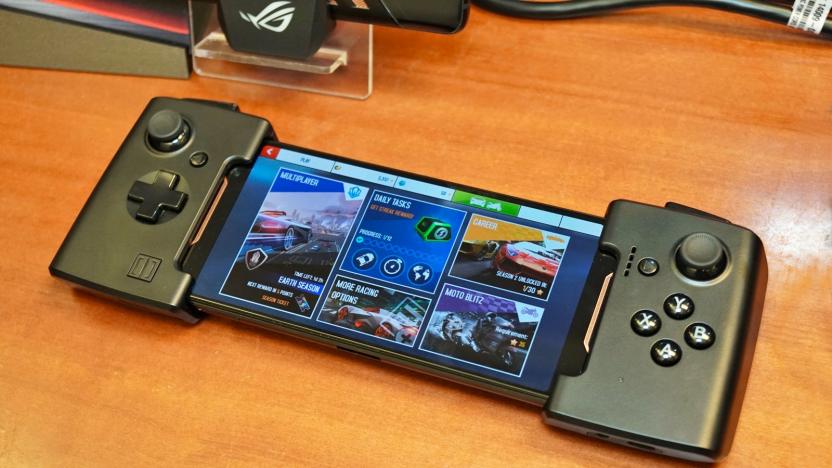
The rise of 'Fortnite' means gaming phones might make sense
When ASUS announced the ROG Phone this week, I thought it was ridiculous. A gaming smartphone with a vapor-chamber cooling system? An external fan just in case the phone runs extra hot? As my colleague Dan Cooper said to me following the announcement, how far do you go before you give up and just buy a Switch? But the more I learned about the phone, the more I became enthralled by it. I realized that the very fact that it was so over-the-top is what made it weirdly appealing, especially to an ever-growing niche of hardcore mobile gamers. As strange as it may be, the ROG phone could be the latest sign that gaming phones are finally finding their audience.
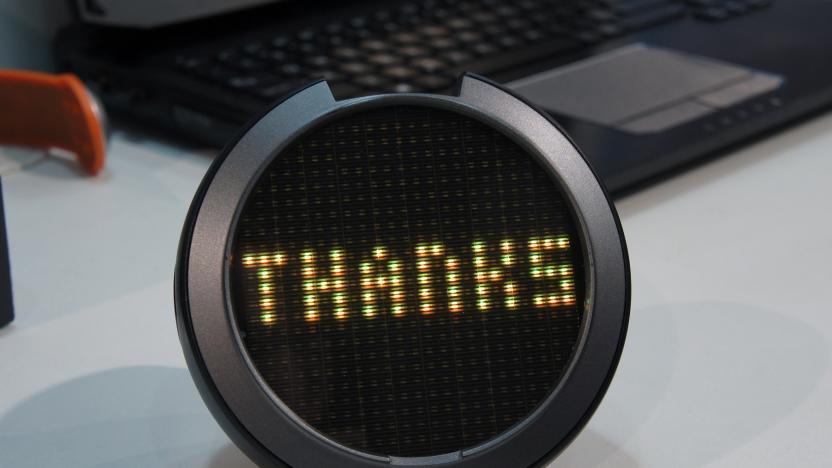
LED screen shows happy thoughts in your rear window
When I commuted by car every day, I always wanted to build an LED display that would communicate my displeasure with my fellow motorists. My lack of engineering know-how put paid to the idea, but thankfully someone has turned the idea into a product, albeit with a focus on the niceties. CarWink is the brainchild of Wei Cheng Chou, a Taiwanese electrical engineer who studied at California's exclusive ArtCenter College of Design. It's a little display that tells other motorists you're full of love rather than, say, where to stick their genitalia.

The humble music box gets a 21st century update
Outside horror movies, music boxes are pretty cool, but their big flaw is that they can only play a few bars of one song. This inflexibility wasn't so much of an issue a century ago, but in the era of Spotify, it's not great. That's why Taiwanese company Tevofy Technology has sought to update the music box for the modern age, in the form of the Music Robot Box, or Muro Box.

An infrared body scanner told me some hard truths
When you're overweight, you try to avoid buying clothes from fast-fashion retailers that you know won't cater to your size. Hell, even if you aren't too big, stores like H&M don't make it easy to buy clothes, since their sizes bear little resemblance to what you're expecting. And since nobody wants to be reminded that they need to shed a couple of pounds, they tend to avoid those stores, which is bad for business. It's a problem that TG3D Studio is looking to remedy, albeit by handing out some hard truths along the way.
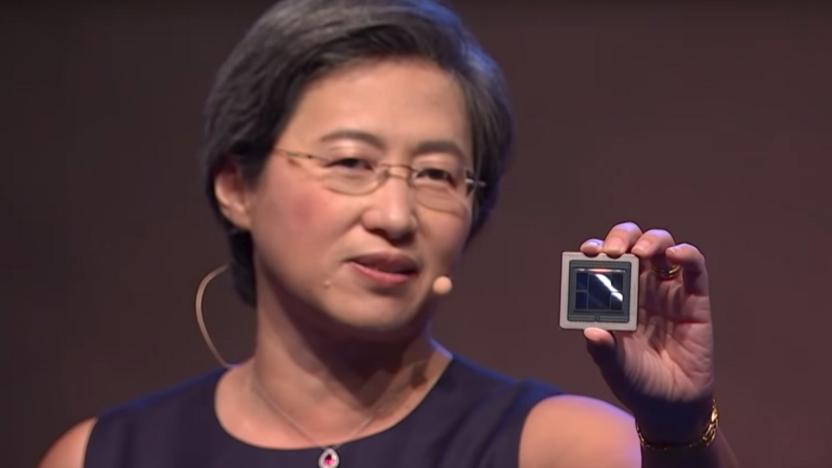
AMD shows off the world's first 7nm GPU, but it's not for games yet
AMD wasn't content just to unveil its 32-core Threadripper chip today. The company also gave us a glimpse of the Vega 7nm GPU, the first graphics processor to be built on such a small process. It's part of the company's Radeon Instinct line, and consequently, it's mainly meant for servers and complex tasks like machine learning. AMD CEO Lisa Su assured the crowd that 7nm Navi chips are on the way for gaming cards, but there's a good chance we won't see those until 2019.

This mesh WiFi router can track motion to protect your family
Back at CEATEC in October, I came across Origin Wireless and its clever algorithm that can turn any WiFi mesh network into a simple home security plus well-being monitoring system, and that's without using cameras or wearables -- just plug and play. At the time, I saw a working demo that left me impressed, but here at Computex, the company has moved its setup to a real-life environment (a lovely hotel room high up in Taipei), and I was finally able to try its fall detection. Better yet, it turns out that Origin Wireless has already been working with Qualcomm to integrate its technology into the ASUS Lyra router, meaning we're one step closer to seeing these features outside the lab.

Windows Collaboration Displays are like DIY Surface Hubs
The Surface Hub family is getting some distant cousins. At Computex today, Microsoft announced Windows Collaboration Displays -- big-screen group-working devices from other manufacturers. Rather than housing computer hardware of their own, they're meant for connecting your own PC. They feature far-field microphones and high-resolution webcams, making them ideal for remote collaboration.

AMD's second-generation Threadripper CPU has up to 32 cores
AMD is once again pushing its processor technology to new heights. During its Computex keynote today, the company revealed that its second-generation Threadripper CPU will feature up to 32 cores and 64 threads. We've known the chip would arrive later this year, but AMD now says it'll launch in the third quarter. The news also comes on the heels of Intel's announcement of an impending 28-core, 5GHz chip. "When we were bringing out 16-core, we already had on the drawing board the 32-core," AMD's Jim Anderson said in an interview. "That's one of the reason it can drop into the same TR4 socket, is because up front we had that in mind." The new Threadripper will run on AMD's 12nm Zen+ architecture, just like the company's newest Ryzen desktop CPUs. It'll sport all of the features from those products as well, like higher clock speeds, more efficient performance and improved boost. Only a few years ago, we were blown away by AMD and Intel's foray into double-digit core counts, so it's surprising to see how quickly we've leaped beyond 30 cores. When it comes to the back-and-forth competition with Intel, who one-upped AMD's Threadripper core count last year, Anderson says it's ultimately good for consumers. "I think Ryzen has had a big impact on the industry, but the best thing about is is that it's driven innovation and competition back in the industry," he said. "And that's good for everybody, and it's especially good for end users. I think having Intel react to us just benefits end users. I also think it's nice to see AMD back to its heritage of pushing the industry."






